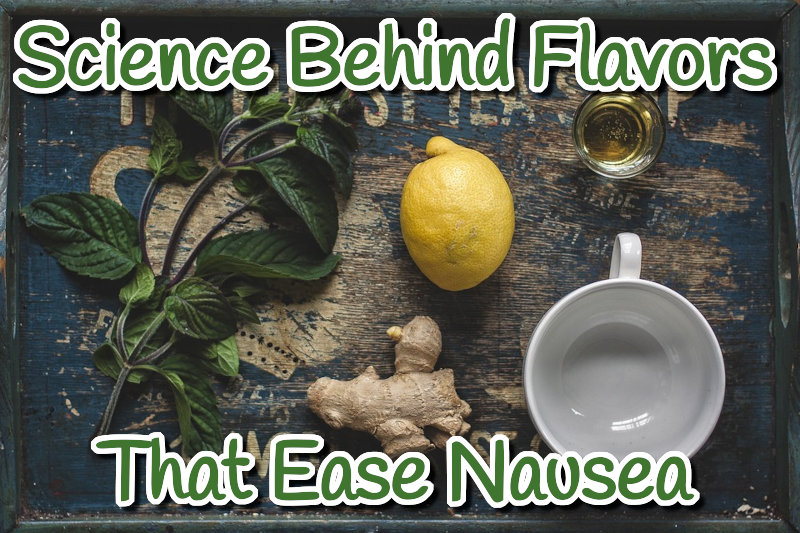Foods That Ease Nausea: Proven Flavors and Tips Backed by Science for 2025

May 17th, 2025 | Motion Sickness, Nausea
Certain flavors and foods can turn a day of queasiness into one of relief. For anyone who’s ever battled morning sickness, motion sickness, or the aftermath of a stomach bug, the idea of using foods that ease nausea isn’t just old wives’ wisdom—it’s grounded in science. But why do some flavors help while others turn your stomach? Knowing the answer can help you feel better, faster, by picking the right flavors when it matters most.
Let’s break down the biology, the flavors that really work, and the reasons behind their success.
The Biological Basis of Nausea and Taste Perception
Nausea is your body’s way of saying something isn’t right. The feeling starts in the brain, not the stomach, with a signal in an area called the chemoreceptor trigger zone (CTZ). This zone scans for signals from the gut, inner ear, and even your sense of smell.
When you’re nauseous, your body releases different chemicals. Dopamine, serotonin, and histamine are a few neurotransmitters involved. Your brain gets a sensory overload from your stomach and gut, and it tries to protect you by making you feel sick.
Taste and smell play big roles here. When you’re unwell, your senses become extra sensitive. Strong, unpleasant smells or tastes can make things worse, but certain flavors can calm everything back down. Some even block nausea signals before they reach the brain.
Taste buds on your tongue work closely with your nose. Pleasant flavors can signal “safe food,” nudging your body out of defensive mode. On the flip side, bitter or unfamiliar tastes can trigger even more queasiness.
Key Flavors That Help Ease Nausea (and Why They Work)
From ginger to crackers, science has studied a range of foods that ease nausea. Let’s dig into the most reliable flavors and the evidence behind them. If you want a helpful overview, check out these nausea relief foods packed with quick tips to calm your stomach.
Ginger: The Proven Anti-Nausea Flavor
Ginger has more research backing it than any other food for nausea relief. Scientists believe compounds called gingerols and shogaols are what do the trick. These chemicals calm the digestive system and block signals between the stomach and brain.
Studies show ginger is as effective as some over-the-counter nausea meds for problems like morning sickness and motion sickness. Even a small amount—a bit of ginger tea, candy, or a supplement—can help keep your stomach settled. Ginger’s warm, spicy kick helps mask bad tastes and smells too.
Mint and Other Cooling Flavors
Fresh mint, with its cool menthol flavor, can take the edge off nausea fast. Menthol relaxes the smooth muscles in your stomach, reducing cramps and that tight, sour feeling. It also delivers a cooling sensation that helps block out unpleasant tastes or smells.
Peppermint tea is a classic choice for queasiness, especially after meals. Sensory studies note that people associate cooling flavors with calm and comfort, which reduces anxiety and nausea. Even sucking on mint-flavored drops or chewing gum can provide fast, gentle relief.
Lemon and Citrus
Bright citrus flavors like lemon, lime, and orange are often recommended for fighting nausea. Their strong aroma can quickly mask unpleasant odors that trigger queasiness, acting as a pleasant “reset” for your senses.
The acidity of citrus stimulates saliva, which helps neutralize acids that build up in your stomach and mouth when you’re queasy. Studies show smelling lemon oil or sipping lemon water can lessen the severity of nausea, especially during pregnancy. Even the scent alone can break a queasy spell.
Bland and Starchy Foods: Soothing the Stomach
When everything else feels too strong or overwhelming, bland starchy foods come to the rescue. Crackers, toast, rice, and plain noodles absorb stomach acid, reduce irritation, and are easy on your digestive system.
Simple starches don’t trigger extra stomach acid or strong taste sensations, which makes them a safe bet when your stomach is sensitive. Doctors often recommend eating small amounts frequently, rather than big meals, to avoid overwhelming the system.
For those seeking an even wider range, find the best foods for nausea relief, including protein-rich snacks and probiotic options, which add a gentle boost for your gut.
Conclusion
Science shows taste isn’t just about pleasure—it’s also practical medicine. Understanding the connection between flavors and the body’s nausea response means you don’t have to suffer through the next bout of queasiness. The right foods that ease nausea—ginger, mint, citrus, and simple starches—offer proven, fast comfort.
Ready to stock your kitchen or travel bag? Explore more about foods to reduce nausea or discover convenient on-the-go options for instant relief. The next time nausea strikes, you’ll know exactly which flavors to turn to for calm and comfort.
Recent Posts
- Nurturing Your Body (and Baby) During Pregnancy: A New Year’s Resolution for Self-Care
- Surviving Christmas Eve with a Newborn: A Guide for Festive Families
- Caring for a Newborn Over Christmas: A Survival Guide for Families
- Navigating the Holidays: Finding Joy and Comfort Around the Christmas Table While Cancer Treatment Persists
- Christmas Dinner Recipes for Pregnant Women: A Festive & Gentle Feast
Categories
- All-Natural (4)
- Blog (47)
- Cancer (73)
- Diet (15)
- Holidays (27)
- Lifestyle (67)
- Motion Sickness (44)
- Nausea (104)
- New Mothers (36)
- Oncology Testimonials (3)
- Prebiotics (1)
- Preggie Products (11)
- Preggie Testimonial (23)
- Pregnancy (158)
- Queasy Products (7)
- Queasy Testimonial (17)
